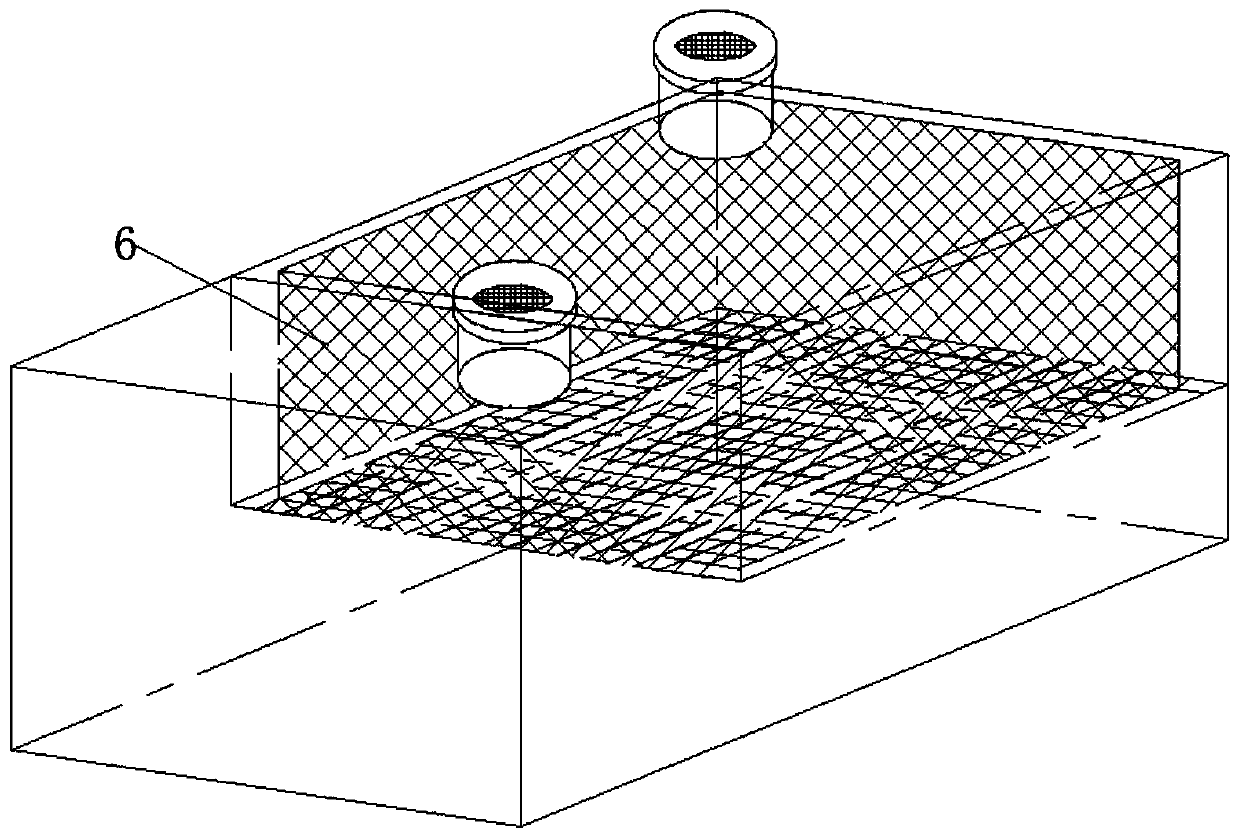Large-scale nasonia artificial-feeding method
A large-scale technology of Golden Hornet, which is applied in animal husbandry and other fields, can solve the problems of being unable to provide a large amount in a short period of time, and parasitic bees are easy to escape.
- Summary
- Abstract
- Description
- Claims
- Application Information
AI Technical Summary
Problems solved by technology
Method used
Image
Examples
Embodiment 1
[0079] A large-scale artificial breeding method for golden hornets, comprising the following steps:
[0080] 1) Obtaining of irradiated housefly pupae:
[0081] 1-1) Breeding and laying eggs of housefly adults: put 1000 housefly adults in a detachable insect cage with a size of 55×55×55cm made of 120-mesh nylon mesh, and one side of the cage has a diameter It is a 15cm round hole, and the outside of the round hole is connected with a nylon mesh sleeve of the same diameter, which is convenient for the replacement of materials in the breeding cage. Put into the weight ratio white granulated sugar in raising cage: the mixed feed of milk powder=2:1 feeds for adult fly. At the same time, put a disposable plastic cup in the cage, put a moist paper towel in the cup, and attach a moist towel to the top of the rearing cage to facilitate adult flies to drink water. Place a dry towel under the bottom of the cage to absorb excess water. After feeding for 5-7 days, place a 9cm-diameter ...
Embodiment 2
[0105] A large-scale artificial breeding method for golden hornets, comprising the following steps:
[0106] 1) Obtaining of irradiated housefly pupae: same as in Example 1.
[0107] Make the beekeeping box first:
[0108] A. Take a net box with a top opening of 22×20×5cm in length×width×height as the inner box 2, the inner box 2 is the bottom mesh 5, and the mesh number is 12 mesh; take the length×width×height as 30 The plastic box with a top opening of ×20×10cm is the outer box 1, close to the end of the outer box 1, use a hot-melt glue gun to seal the upper end of the inner box 2 flush with the upper end of the outer box 1; the bottom of the inner box 2 is a 12-mesh mesh The hole structure is used to screen out the host and parasitoids after parasitism, so that the parasitoids can fall into the outer box 1, and the host remains in the inner box 2.
[0109] B. Make the cylindrical tanks of the inlet and outlet: open a round hole with a diameter of 8 cm in the middle of the...
PUM
 Login to View More
Login to View More Abstract
Description
Claims
Application Information
 Login to View More
Login to View More - R&D
- Intellectual Property
- Life Sciences
- Materials
- Tech Scout
- Unparalleled Data Quality
- Higher Quality Content
- 60% Fewer Hallucinations
Browse by: Latest US Patents, China's latest patents, Technical Efficacy Thesaurus, Application Domain, Technology Topic, Popular Technical Reports.
© 2025 PatSnap. All rights reserved.Legal|Privacy policy|Modern Slavery Act Transparency Statement|Sitemap|About US| Contact US: help@patsnap.com



